Dental implants offer a lifelike solution for tooth loss, allowing you to regain the confidence of your natural smile. Crafted from titanium, these implants closely mimic the form and function of your original teeth, providing a sturdy foundation for your dental crown.
Why are dental implants recommended?
Patients with dental implant treatment can smile more aesthetically with the natural appearance of their teeth, speak freely, and consume the food they want without worrying about it.
Patients who have traditional prostheses may experience problems in the palate tissue, gum tissue, and jawbone over time, as there is no tooth root to support the prosthesis. In dental implant treatment, since the force generated during biting and chewing is covered by the implant, an artificial tooth root, the problems seen in traditional prostheses are not seen after implant treatment.
Who is a good Candidate for Implant Treatment?
Implants are an ideal choice for those who have completed adolescence and are seeking a lasting tooth replacement. Each case is individually assessed, ensuring the best treatment path. Implants offer an unparalleled solution for those missing a single tooth or multiple teeth, providing a comfortable and reliable alternative to traditional dentures.
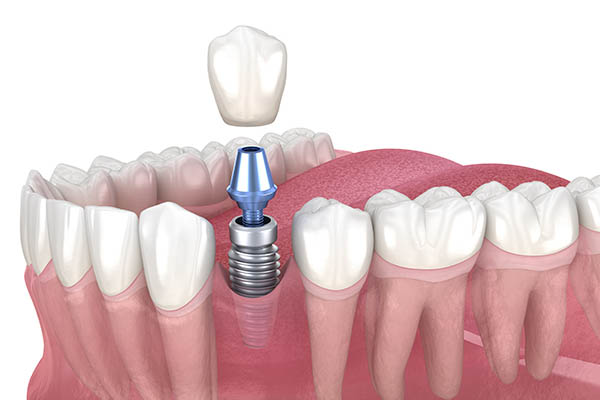
Why Choose Implants at Clinic One?
- Natural Aesthetics: Implants closely resemble natural teeth, offering a seamless smile restoration that's as close to nature as possible.
- Top-Quality Material: We exclusively use the finest brands, ensuring the longevity and reliability of your implant.
- Expert Surgical Team: Our specialized surgeons conduct all implant operations, guaranteeing precise placement and optimal outcomes.
- Personalized Treatment: Implant suitability is determined based on your unique case, ensuring a tailored approach to your dental health.
- Minimized Discomfort: We employ digital anesthesia, significantly reducing pain and discomfort for those with dental anxiety.
Why Opt for Implants in Turkey?
Discover the allure of Turkey for your dental implant journey:
- Affordable Excellence: Experience top-tier dentistry at a fraction of the cost, without compromising on quality.
- Global Accessibility: Istanbul boasts direct flights from over 286 cities, ensuring a seamless journey to your dental destination.
- Proven Health Tourism: Millions of people choose Istanbul annually for healthcare, trusting in its reputation as a health tourism hub.
- Captivating City: Immerse yourself in the beauty of Istanbul, a culturally rich city boasting breathtaking scenery, culinary delights, and hospitable locals.
Discover the potential of dental implants in the heart of Istanbul – your path to an enhanced smile and vibrant dental health.


The human body exhibits perfect integrity with all its organs. We carry out our vital activities with these flawless organs we have. Life becomes very difficult for us when it comes to losing any organ. It is not possible to fully compensate for these losses. However, tooth loss is an exception. As a result of the developed techniques and scientific studies, it has become possible to have teeth in the closest shape and function to the original.
Implant treatment, presented by studies on tooth loss, is the perfect form of knowledge of thousands of years of human history for the benefit of humanity today. Although various stone and bone fragments were used in the first procedures in the stage of history, the first forms of titanium implant teeth, which are currently used, began to be produced in the early 20th century. It has been preferred as a safe form of treatment for 40 years all over the world.
It is the most preferred treatment for our patients in our clinic, along with the constantly renewed state-of-the-art imaging systems and veneer products such as porcelain, empress-Emax, and zirconium.
Turn your dental treatment into vacation
Click the button below to make an appointment.
WhatsApp ChatWhat is an implant?
Implants are artificial teeth produced from titanium material, closest to the natural tooth form. Implant tooth is a form of treatment that allows us to redesign the natural Tooth with its root and crown as close to the original.
The dental implant, which is made of titanium and replaces the tooth root, can be in different diameters and lengths according to the patient's bone structure and the dentist's strategy in treatment. In constructing implant teeth, which is called thread screwing, the longest form of the titanium part is preferred. In this way, the Tooth crown will be built on a stronger foundation. On the artificial root of the implant, there is a spacer, which we call the abutment, where the crown part will be placed. On the abutment, the crown of the Tooth, designed with various veneer materials such as porcelain, empress-Emax, and zirconium, is placed.
All the parts mentioned in the construction of the implant and the products used in the veneer are fully compatible with the oral soft tissues and bone structure. Our patients can easily eliminate one or more missing teeth, toothless mouths, and removable dentures with implant treatment.
Who is suitable for implant treatment?
In cases with missing teeth for various reasons, the most important criterion is whether there is a health problem that prevents our patients from performing the procedures to be applied in the implant treatment procedure.
• Those who have completed adolescence:
The developmental period must be completed for the teeth to take their original place. For this reason, this treatment is suitable for patients who have completed the developmental stages of puberty.
• In cases where the neighboring teeth do not cover the missing tooth:
Sometimes, when our patients come to our clinic for implant treatment after a long period of missing teeth, it may be too late for this treatment. Since the spaces between the teeth are filled with other neighboring teeth, there is not enough space for implant procedure. In these cases, it may be necessary to choose bridge treatment with some cutting of the adjacent teeth.
• Those who are going to have a tooth extraction or not long after tooth loss:
If there is a recent tooth loss or a tooth in the extraction stage, the most appropriate thing is to perform tooth extraction and implant placement at the same time. In this way, the healing process of the implant is halved.
• Those with diseases that can be controlled:
There may be patients with high sugar and high bone disease or blood-related disorders. In consultation with the physicians who treat these patients, we can perform implant treatment in these patients by making some analyzes if necessary. We do not want to victimize patients by saying that implant treatment cannot be applied to patients with preliminary acceptance without these examinations. In this case, patients who have certain diseases and are already treated may also be suitable for implant treatment.
Turn your dental treatment into vacation
Click the button below to make an appointment.
WhatsApp ChatFor whom is the dental implant not suitable?
Implant dental treatment is a process carried out by the patient and the dentist together. At the beginning of the treatment, the information that our patients give to the dentist about their general health is very important. It is essential for the patient to share with the dentist what ailments he has had fully, what treatments he has had, and what medications he has used.
If deemed necessary, the dentist and the specialist physician following the ongoing treatment can make an interview and evaluate the situation together. Since implant treatment includes multiple surgical operations, complications that may occur during treatment should be analyzed very well. In the following cases, treatment can be started by taking the opinion of the relevant specialist doctor, or it can be said that this type of treatment is not suitable for the patient:
- Those who use a pacemaker
- Severe diabetics (diabetes)
- Those whose jaw structure development has not been completed and those who continue adolescence
- Those under the age of eighteen
- Uncontrolled high blood pressure patients
- Patients experiencing severe bone destruction
- Patients using blood thinners
- Those with immune system diseases
- Those with organ transplants
In patients whose risk status is evaluated, implant procedure can only be started with the approval of the relevant specialist physician.
What Are the Tests Performed in Dental Centers in Turkey Before Implant Treatment?
With dental volumetric tomography, a three-dimensional cross-sectional image of the area to be examined is obtained. In this way, the bone where the implant will be placed can be seen fully in width and length. Sometimes the bone length is sufficient, but the bone can become thinner by narrowing towards the end. These conditions can be detected clearly with three-dimensional tomography. It is useful for patients to ask whether dental volumetric tomography is in the clinic where they will receive this treatment. Otherwise, the patient needs to request this three-dimensional tomography from the dentist, even by getting service from another imaging center, so that the treatment can be done more healthily.
For patients with a systemic disease, examinations related to the disease followed are also requested. When deemed necessary, meetings are held with the specialist physician who follows up.
How is Implant Treatment Performed?
This treatment requires professional work and the patient and dentist to work harmoniously. Especially during the healing process, it is very important for the patient to strictly follow the dentist's recommendations and pay attention to his health. First, our dentists provide detailed information to the patient about all stages of the implant process.
First Examination:

During the first examination, the patient's mouth and tooth structure are viewed in three dimensions with dental volumetric tomography, and all treatments that the patient has received in the past are examined. If there are problem areas, they are detected. Some patients may have incorrectly treated teeth; if any, these conditions are added to the treatment plan. According to three-dimensional images and physical examination:
- Suitability of bone structure,
- The number, shape, and location of the implants,
- The material to be used in the veneer of the dental crown structure,
- Determinations such as taking the necessary measurements for tooth design are made.
In addition, according to the results of this examination;
- Tartar cleaning and tooth discoloration,
- Gingival recession,
- Inflamed tissues,
It is evaluated whether there are discomforts such as crowding and separation of the teeth. The required treatments are prioritized, and oral health is made ready for implant procedure.
Placement of Implants:
It is very important for our clinic that the patient has a comfortable surgical process. For this reason, local anesthesia is applied to patients. Sedation can be applied, depending on the patient's excessive stress and fear. Implant treatment is performed on the jawbone. To reach the jawbone naturally, the gingiva must be removed (flap operation). After the gingival removal process, an area is opened for the implant to the predetermined places on the bone. This process should be done very sensitively.
The reason for this; If the area opened for the implant is too narrow, the implant will press on the jawbone and disturb the patient. Since the implant imitates the root of the tooth and will carry the crown, it will be appropriate to use the longest possible implant as long as the patient's jawbone volume allows. This process will be easier if the implant placement is done together with tooth extraction.
The main element holding the teeth and gums is the jawbone. Implants applied to replace the newly extracted tooth adapt to the bone more quickly, and bone loss is not experienced. After the implant is placed, the gingiva is sutured, and the union time is waited.
Turn your dental treatment into vacation
Click the button below to make an appointment.
WhatsApp ChatAdaptation of the Implant to the Bone Tissue and Taking the Impression of the Permanent Dental Veneers:
The implantation period of the implant to the jawbone is three months, and during this period, the patient helps the healing process of the implant by paying attention to his nutrition and health. After three months, the gingiva in the area to be treated is opened, and the gingival shaping cap is attached. This gingival shaping head is aimed to achieve a normal gingival appearance by wrapping the crown. For this procedure, waiting one week for the gingival healing period is normally required.
Then the measurement is done. Impressions are taken by means of manual and intraoral digital scanners. During the measurement process, the distance between the tooth to be implanted and the adjacent teeth, the length of the structure on the implant, and the relationship between the teeth to be mutually overlapped should be calculated very well.
This process is very important for the successful procedure of the implant that the patient will use throughout his life and is directly related to the dentist's knowledge, skills, and experience. The designed teeth can be prepared in a week, depending on the density in the laboratory.
Placement of Implant Veneers:

The gingival shaping head is removed, and a spacer called an abutment is placed. Since the bone and gingival tissues are completely healed, no anesthesia is required because no procedure will cause pain and suffering at this stage. The finished dental veneers are fixed to the implant by bonding or screwing, depending on the type of treatment. If the fixation is made with the help of a screw, an aesthetic loss is not allowed by covering the screw with a composite filling.
These treatment stages may vary depending on the region where the implant is applied and the patient's demand. For example, suppose the procedure is in an area that looks like the front teeth. In that case, a temporary prosthesis can be applied to ensure that the patient's appearance is preserved during the treatment.
Which Methods are used in Implant Treatment?
Implant treatment can be applied with four methods that offer different advantages. The method to be chosen for this treatment may vary according to the determinations of the dentist and the patient's expectations from the treatment. Now let's move on to our briefing on each of these methods:
- Tooth extraction & Implant procedure method:
It provides great benefits in suitable patients in terms of the patient's comfort during the surgical operation and recovery process. With the same local anesthesia, tooth extraction is performed and the implant is placed in the cavity opened by the eruption of the tooth root.
- Fast implant - Mini implant method:
Bone tissue loss is experienced due to the removable prostheses used by the patients for years. Years after tooth extraction due to negligence, it is too late to consider implant treatment, and there is also a loss of bone structure. In this case, either the grafting or mini-implant method will be preferred. Since grafting will increase the cost and treatment time, the mini-implant method comes to the fore. This method, mostly used for molar teeth, can be treated with short implants since the bone structure is low.
- Flapness method:
The Falapness method is a method that eliminates gingival incision and suturing in patients whose conditions are suitable for implant treatment. To reach the bone tissue, the required area is opened in the gingiva by using the punch. The implant is placed in the bone tissue, and the gum-shaping apparatus is attached. This method completes gingival healing faster, more painless, and more seamless.
- Classical implant method:
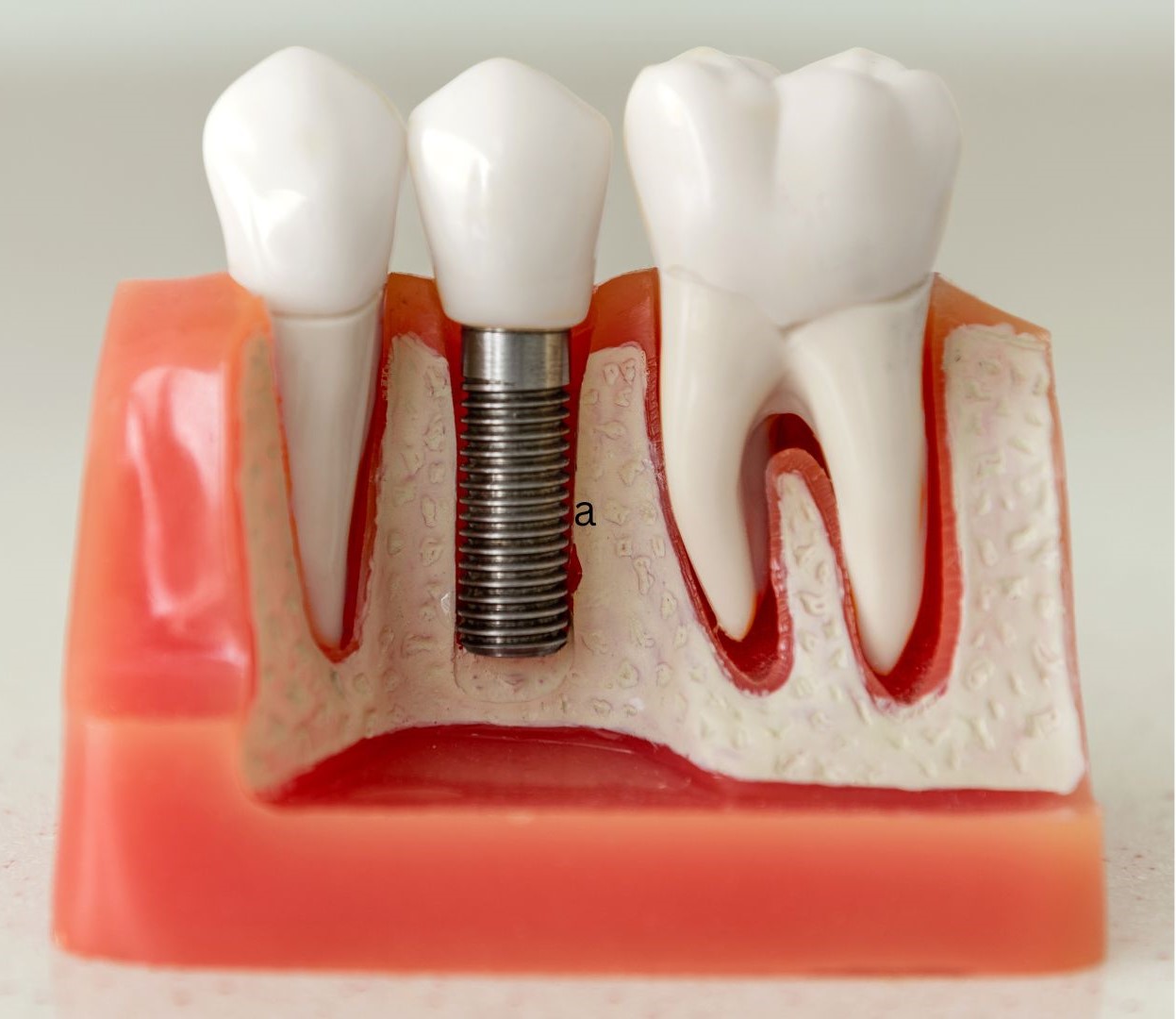
With the flap operation, the bone tissue is reached by incision on the gingiva. After the implant is placed, the gingival tissues are attached with the help of sutures. It is waited for a week for the gums to heal, and then the stitches are removed. If a self-melting suture is used, this process is also not required. After the implant is fused to the bone tissue, the gums are reopened with a small incision from the upper part of the implant, and the gingival shaping cap is attached. After the gingival shaping process is completed, the prosthetic teeth are fixed to the implant with the help of abutments, and the treatment is terminated.
What is the Difference Between Implant Teeth and All On Four and All On Six Treatments?
All on four and All on six are techniques developed over time in implant treatments. These techniques have been developed for edentulous mouths. With classical implant treatment, a solution can also be offered to completely edentulous mouths. However, the number of implants used can be eight or more.
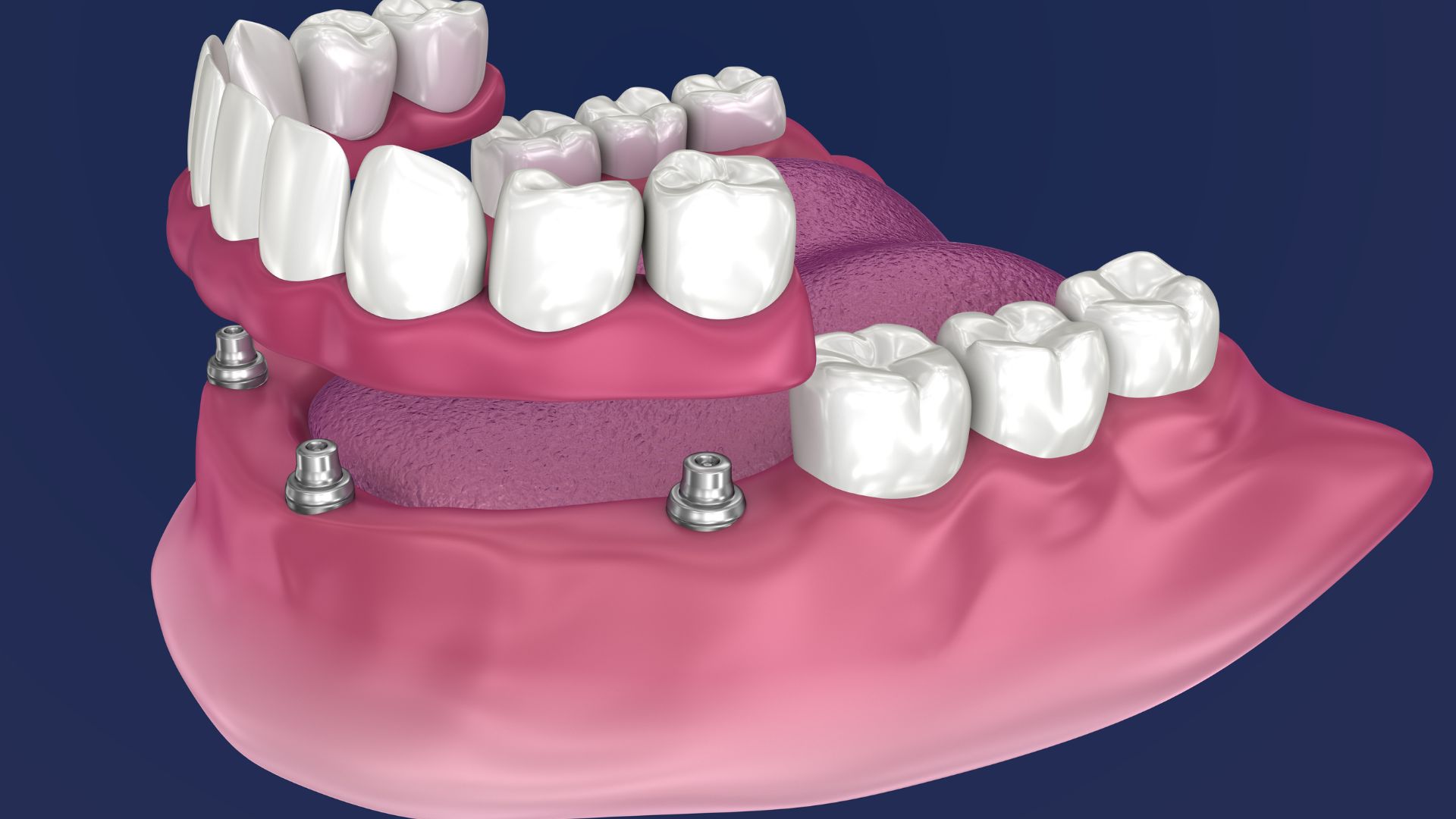
In the all-on-four technique, when there is not enough bone tissue to use many implants in edentulous mouths, four implants are used, which are positioned with certain calculations. For this reason, the treatment is called All on 4. You can find more detailed information by reading our All on Four articles.
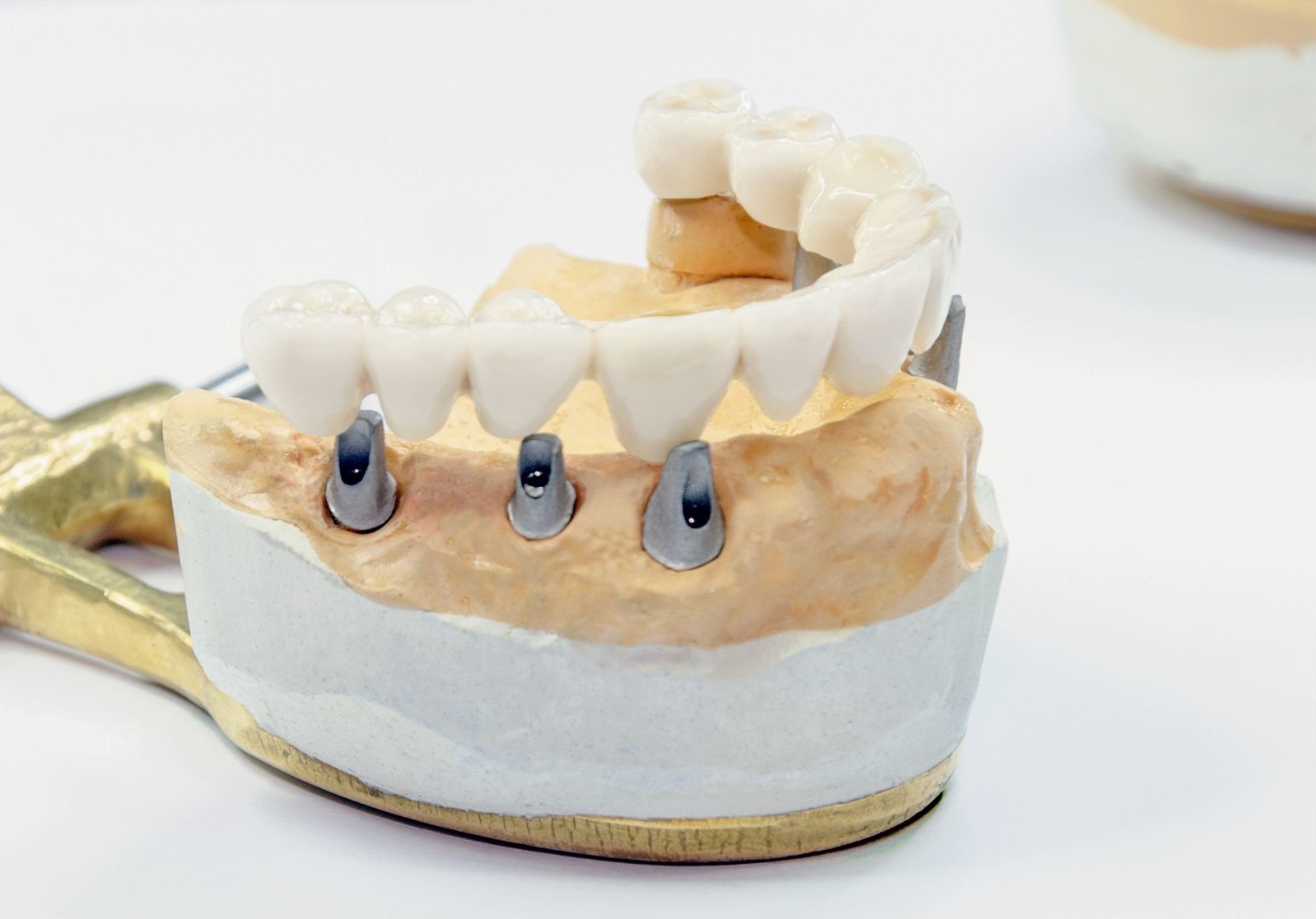
In the all on six technique, it is a treatment technique in which six implants are used to increase the strength of the prosthesis in cases where bone tissue is more sufficient. This treatment received the name All on six due to the number of implants used. You can find more detailed information by reading our All on Six article.
Turn your dental treatment into vacation
Click the button below to make an appointment.
WhatsApp ChatWhat is Seamless Implant Treatment? How is it done?
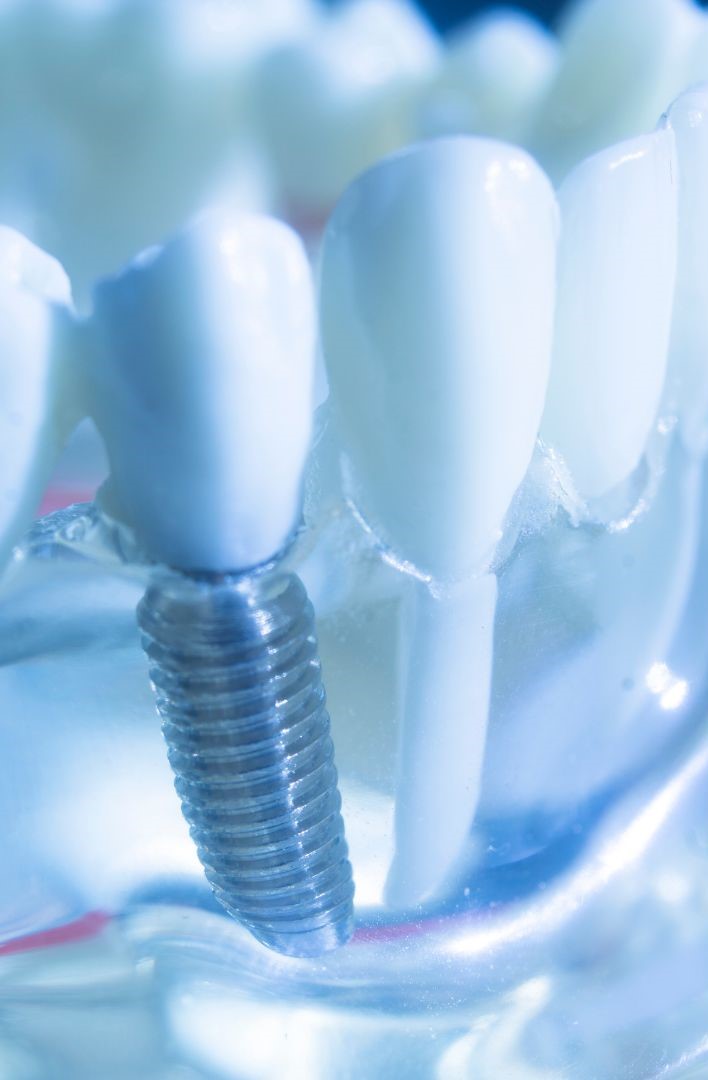
As it is known, implant procedure is a treatment that has been used for years. This form of treatment also benefits from the innovations brought by technology. In classical implant dental procedures, after removing the gingiva (flap operation), space is made for the implant in the bone. Then, the removed gums are closed with the help of stitches, and the stitched area should be followed up during the treatment.
In the seamless implant method, the bone structure of the patient can be examined, and implant locations can be determined by means of three-dimensional tomography images. The biggest advantage of this method is that there is no bleeding and pain since there is no gingival incision or stitching. For patients who want to receive their treatment in a short time, it saves time as the recovery period is shorter.
Is There an Age Limit in Teeth Implantation Treatment?
The alignment of the natural teeth and the completion of the development of the jaw bones are important for this treatment. For this reason, the adolescence process must be completed. The general acceptance of the age limit is that the patients are 18 or older.
What are the benefits of Implant Treatment?
Some of the many benefits of this treatment can be listed as follows:
- Currently, those who use full chin prosthesis (palatal prosthesis) experience discomfort in case of rapid weight gain and loss. In dental implant treatment, this problem disappears.
- There is no problem with putting on, falling, or chewing.
- It does not cause deterioration in speech.
- Aesthetically, it offers the closest appearance to your natural teeth.
- It is robust and reliable as it imitates tooth roots.
- In full jaw prostheses, loss of the jawbone begins over time, and the implant tooth prevents the jawbone from being lost. Since the implants replace the tooth root, they are surrounded by bone tissue and do not allow tissue loss.
- When implant treatment is performed instead of the bridge treatment made by cutting from the neighboring teeth, damage to the tissues in the neighboring teeth is prevented.
How long is the implant tooth life?
Theoretically, depending on the materials' characteristics, we can say that the life of the implant tooth is as long as yours. If the implant is properly fused to the jawbone, our patients can use the screw part placed in the bone for life. The veneer material used in the superstructure of the implant can be used for twenty years or more, depending on the type and the patient's care.
What Should Be Considered Before Implant Treatment?
Our patients should pay attention to the following points before treatment:
- If there has been an intervention to the teeth and gums in the past, they should be shared with the dentist.
- It should comply with the dentist's treatment plan to prepare the oral health for the implant procedure.
- He should inform the dentist about the diseases he has had before and the drugs he constantly uses.
- Should pay attention to oral hygiene for treatment procedures.
What Should Be Considered After Implant Treatment?
Our patients should pay attention to the following points after treatment:
- Don't try to eat anything just after the surgery.
- You may use painkillers recommended by your dentist if needed.
- Avoid spitting and rinsing, especially on the first day.
- No brushing, as you will not spit on the first day; you can continue brushing normally from the second day.
- Do not consume hot foods for three days.
- Use the medicines prescribed by your dentist regularly, use the antibiotics until they are finished.
- Take a break from smoking and consuming alcoho for at least 2 weeks or even during recovery.
- Do not use mouthwash until the stitches are removed.
Please click here to learn more about "What Should Be Considered After Implant Treatment?"
Is There a Lot of Pain in Implant Procedure?
Our patients have fears that implant procedure is a very painful process due to the information they have gained from their environment. Some patients do not prefer this treatment even though their quality of life is seriously low due to this unfounded fear. There may have been examples of procedures that would cause this in the past. However, as a result of the materials used today and the experience of dentists, implant treatment is no longer a fearful dream.
Even in cases that can be called very severe in medicine, patients do not feel any pain with appropriate anesthesia methods. In implant treatment, the relevant area is locally anesthetized with anesthetic drugs given by the anesthesiologist. In this way, it is not possible for our patients to feel pain during the surgical procedure.
The gum and jaw bones are lifted during the surgical operation, and the gums are sutured. For this reason, there may be a pain for the first few days after the effect of anesthesia wears off. These pains can be controlled using painkillers recommended by the dentist. Depending on the pain threshold, the pain experienced by our patients during the implant treatment process may vary. Our patients do not experience more than the pain experienced during tooth extraction during this treatment process.
What is Periimplantitis? Can Implant Inflammation Be Treated?
Periimplantitis is the inflammation around the implant placed in the dental tissue. It is not possible for implants made of titanium to cause inflammation. However, inflammation may occur due to situations such as not paying attention to the general cleaning rules during or after the procedure, behaviors that will cause the implant to move within the three months expected for the compatibility of the implant with the bone tissue, and the insufficient quality of the materials used. This rare condition can be treated.
What is Grafting Treatment? When Is Bone graft Treatment Applied?
When teeth are extracted and dentures—a full jaw detachable prosthesis—are worn for several years, some of our patients may experience significant bone loss in their jaws.
By using the patient's tissues or externally supplied bone graft materials, we can restore the required level of bone depth and width in the affected location. This procedure is known as a "bone graft" or "bone graft treatment."
Dental bone grafting is used to treat the lower jaw, and patients who have experienced significant bone loss may require a longer course of treatment.
Please click here to learn more about "What is Grafting Treatment? When Is Bone graft Treatment Applied?"
How long after a bone graft can you get a dental implant?
Recovery after bone grafting typically takes 3 to 4 months. Following the completion of the bone grafting procedure, the implants are positioned.
Why do I need a bone graft before placing an implant?
Implants are screws placed in the jawbone. For this reason, there must be enough jawbone to support the implant and provide a good fusion with it. In case of insufficient bone development or bone resorption, bone grafting is required.
Do I need to have dental implant for every missing tooth?
There is no need to have an implant for every missing tooth in the mouth. Usually four to six implants are used to replace all the teeth in the lower or upper jaw. A few less teeth can be restored with two or three implants. As the number of implants increases, the foundations are laid more solidly and a stronger mouth structure is achieved. This is especially important for people who have a high bite force and who grind their teeth violently in their sleep.
What happens if the implant does not fuse (integrate) with the bone?
This event is very rare. In cases where the implant is loosened, the implant is removed and the tooth/gum is left to heal. Following an invasive extraction, a replacement implant is not placed right away. Your dentist will insert your new implant after healing is complete. In addition, it can alternatively build bridges using implanted and extracted teeth.
FREQUENTLY ASKED QUESTIONS
Are There Risks of Implant Procedure?
There may be complications that may develop in this treatment. However, these risks can be avoided with the adequacy of clinical equipment, the provision of necessary hygiene conditions, and the dentist's experience. These conditions, which are completely preventable and treatable if encountered, include:
- Infection of soft tissue or bone tissue
- Fracture formation in the jawbone
- Positioning close to adjacent tooth roots in planning the implant location
- Damage to the sinus cavities
- Damages caused by the contact of the implant with the nerves
How long does the implant treatment take?
When the patient comes to the clinic, the first examination is made, and a three-dimensional scan is performed with dental volumetric tomography. This process can be done in as little as fifteen minutes. The procedures needed for and before implant treatment is determined. Suppose the patient accepts the procedures to be made, and there is no oral and dental health obstacle before the implant procedure. In that case, the procedures can begin immediately on the same day. If any, the teeth to be extracted are extracted, and the areas to be applied are opened in the gums and jawbone according to the number of implants to be placed and the implants are placed. Although this depends on the number of teeth to be extracted and the number of implants to be used, these procedures can be completed within a day. Temporary prostheses can be placed in the patient's mouth on the same day or the next day. On the other hand, permanent dentures are placed at the end of the expected three-month period for the fusion and adaptation of the implant tooth to the jawbone.
How Much Are Dental Implant Prices? What Affects Implant Tooth Prices in Turkey?
Sometimes, our patients are more curious about the implant prices than what the implant procedure will bring to them. As we mentioned in our article, dentists will prefer different treatment methods and techniques. However, many factors, such as the materials used, the number of implants, and exchange rates, affect the price. To give a healthy implant price, the factors we have just mentioned should be evaluated together with the examination.
Can we make a diagnosis by sending our current X-ray?
Our patients sometimes call our clinic and ask us to evaluate whether they are suitable for implant procedure by sending their current x-rays. Although we try to help our patients online, this method is unhealthy. The x-rays sent by our patients are sometimes not as good as we want, or more than six months may have passed after the extraction. In this case, evaluating the current state of bone and soft tissue is impossible.
A newly taken x-ray with the necessary features is needed to make a healthy diagnosis. Therefore, although a preliminary evaluation is made on the x-ray sent to our clinic, the actual diagnosis can be made in the clinical setting to protect our patients from misdirection.
Is a Natural Appearance Provided with Implant Teeth?
Normally, the implant and the abutment parts used on it have a grayish metal appearance. However, the titanium implant in the dental bone is positioned below the gum level. The part above the gingival level is the abutment. Tooth veneers are also affected by the underlying material. Since metal-supported veneers have been used in the past, our patients fear that the implant's metal color will present a bad appearance as in the past. However, thanks to the technologies used in dentistry today, the metal color of the implant materials are prevented from reflecting on the tooth surface. Implants with zirconium infrastructure offer successful results. Implant dental treatments that we apply in our clinic provide a natural appearance.
Is Smile Design Possible with Implant Treatment?
In addition to the dental problems of our patients who come to our clinic, what they expect from implant treatment is also important. In addition to eliminating the missing teeth, some patients may want a smile design aesthetically. Especially during the elimination of deficiencies in the front teeth, these demands come. In this case, the implanted teeth to replace the missing teeth can be made with an aesthetic study by the smile design desired by the patient. The patient can work with the dentist on smile design in the digital environment. However, smile design is a slightly more complicated form of treatment and may require other interventions besides the implant tooth. You can get detailed information from our smile design article.
What is a Zygoma Implant? How is it applied?
We stated that the width and depth dimensions of the lower and upper jaw bones in implant treatment should be at a certain level. Our dentists may choose this treatment method in cases where they cannot find a sufficient bone ratio for implant construction in the patient's upper jaw. If the patient does not want bone grafting (bone graft treatment) due to the cost or long treatment period, our dentists recommend this method to the patient.
Zygoma is the name of the bone we know as the cheekbone in the literature. Thanks to the constantly developing techniques, it is possible to make implant teeth by using the cheekbones when needed. In this treatment, longer dental implants than normally used are preferred. An adaptation period to the zygoma bone is expected for three months for these implants placed on the patient's cheekbones. Afterward, the preferred crown veneers on the implant are permanently adhered, and the treatment is completed.
How Much Are Zygoma Implant Prices?
While the length of the implants used in implant treatments is a maximum of 12 mm, the length can be up to 50 mm in the zygomatic implant treatment. Since the titanium materials used for the zygoma implant are made in longer lengths, this is reflected in the prices. The brand, imported, or domestic production of the products preferred for an implant and crown veneer affects the price. Zygoma implant prices can be determined according to the examination and the condition of the specified factors.
What is Sinus Treatment in the Tooth? When is Sinus Lifting Applied?
For patients to have dental implants, their jaw bones must have a certain volume. Placing implant screws in the bone is possible with a certain depth and width capacity. If there is not enough bone volume in the lower and upper jaw, this problem is tried to be overcome with certain treatments. Some options include bone graft treatment (Grafting), zygomatic implant, and sinus lift treatment for the upper jaw. The maxillary bone deficiency is tried to be eliminated according to the most appropriate treatment that the dentist deems appropriate.
Sinus Lifting treatment is one of these options; It is the method in which we try to give tissue to the jawbone by using the patient's sinus cavities. The sinus cavities in our body provide us with more than enough room for this process. It is a form of treatment performed by opening the door to the sinus cavities through the mouth and applying bone graft, which we take from the patient or supplied from outside, on the upper jaw bone. Bone grafts sourced from outside consist of synthetic or animal products. The treatment is carried out by making a choice according to the patient's preference. There is a three-month waiting period in order to ensure bone formation after sinus treatment in the tooth.
Classic/Traditional Bridge? Implant Treatment? What are the advantages?
In classical bridge treatments, substance is lost in the teeth adjacent to the missing tooth. However, the classical bridge is more suitable in terms of cost. Classical bridges have less durability and service life. Since neighboring teeth support these bridges, they cause an extra load on these teeth.
Since the implant treatment is directly connected to the bone tissue, its durability is very high, and it has a long life. There is no interference with neighboring teeth. Although the implant prices are high, the advantages and disadvantages of both treatments can be decided by evaluating them.
Will a Lifetime Diet Be Applied After Implant Treatment?
Another misunderstood issue is that after the treatment, a heavy diet will be applied by interfering with the patient's eating habits. Just as every healthy person should protect their teeth after implant treatment, avoiding excessively hard biting and plucking behaviors is sufficient. This does not mean lifelong dieting. It means protecting your teeth from harmful foods for life.
How Should Implant Dental Care Be Done?
It would be extremely wrong for our patients to think that I have had implant teeth and they do not need to pay much attention to dental care from now on. After implant procedures, there are some care rules that our patients should pay attention to, which are easy. If these are not taken care of, the implant tooth and the veneers on it will be damaged. Our patients should pay attention to the following issues regarding the care of dental implants:
- Aggressive movements should be avoided to protect your dental implants.
- Daily oral care should be maintained as with normal teeth.
- Do not take dangerous actions if you do it with your normal teeth. Avoid very hard foods and remove the shells of crusty foods with your teeth.
- In addition to daily brushing, pay attention to dental floss, interface brush, and mouthwash.
- Do not delay dentist checks. See the dentist twice a year, with or without a problem with dental implants. Dental implants can be healthily used for many years as long as these issues are considered.
Does the Body Have a Rejection of Implant Teeth?
The body does not accept implant teeth. Since biomaterials compatible with bone and gingival tissues are used in the dental implant treatment, there is no compatibility problem. Implants made of titanium material and porcelain, zirconium, and empress-emax-based materials used in crown veneer are all biocompatible. The compatibility problem of the bone or gums with the implanted tooth may be as follows;
- If the sterilization of the tissues worked during the surgical procedure has not been fully achieved.
- If the quality of the materials used is low.
- In cases where our patients have temporary teeth on implants, problems may arise in the procedure of implants when our patients use these teeth for hard biting and chewing functions like normal teeth.
- Our patients should remember that; Temporary dentures are designed to be used until the fusion with the bone tissue is achieved, while the three-month implant treatment period is awaited. In this implant process, temporary dentures can be used for aesthetic comfort and to consume only liquid and soft foods. For this, you should pay attention to your nutrition and consume only liquid and soft foods during the three months when the bone you use a temporary prosthesis is compatible with the implant.
Does Implant Teeth Damage Nerves?
The implant, which we stated to be compatible with bone and soft tissues, does not harm the nerves. There is a possibility of damage to the nerves during the placement of the implant in the bone tissue. Since the location of the nerves is determined with precision measurement and three-dimensional imaging systems, implant procedure is performed harmlessly.
Does the implant tooth fall out?
Implant teeth do not move or fall out if the procedure principles are followed. If the implant is properly fused to the bone, there is no cause for concern.
In dental procedures on implants, veneers are fixed in two ways. The first is done by sticking the veneer on the implant tooth. In the second procedure, the crown teeth are fixed on the dental implant with the help of screws. Sometimes, when our patients try to consume sticky foods such as gum and Turkish delight, especially during the first week of implant procedure, when they force the veneer teeth, the veneers can come off, or the screw veneers become loose.
Although it is rare, our patients who encounter such a situation do not need to worry. This problem can be solved immediately and clearly with a short visit to our clinic.
Does Implant Making Damage Other Teeth?
The purpose of implant procedures is to complete the missing tooth or teeth. Therefore, the procedures for implant treatment are done in a way that does not harm healthy teeth.
Teeth made in implant treatments are not attached to neighboring teeth; each implant tooth is positioned independently in the mouth. No action is taken on other teeth unless there is a medical necessity. However, if teeth become dysfunctional due to inadequate oral care or other reasons, these teeth may be interfered with.
Is There Permanent Damage in Implant Treatment?
There is no permanent damage as long as the procedure is followed in implant procedures. As with any surgical operation, some complications may develop in this treatment. But there is no permanent damage. If the dentist who plans the implant process has sufficient knowledge and skills, the procedures performed in the treatment will not cause permanent damage.
In the procedures of dentists who do not have sufficient equipment and experience, the sensory loss may occur if contact with the nerve structures fades during implant placement to the bone structure. For this reason, you must receive treatment from a clinic you trust.
Does the Implant Cause Bruising in the Tooth Gum?
There may be bruising in the gums in patients with dental veneer treatment. This is primarily because the veneer is metal-backed. If metal support is not preferred in the veneers used in implant treatment, such bruising will not be seen in the gums. Secondly, if the necessary sensitivity is not shown while measuring the dental veneer, bruising may occur in the gums due to the pressure of the veneer on the gums. There is no gingival bruising in the implant tooth made with a correct and meticulous study.
In addition, bruising of the gums may occur in people who have not undergone implant treatment or have no crown teeth if the necessary sensitivity is not shown to oral and dental care. For this reason, each individual must prevent gum diseases by doing daily oral care.
Should Domestic or Imported Implants Be Preferred?
In all types of treatment we apply to our patients in our clinic, the patient's health and satisfaction has been our priority. There are many companies producing implants in the world and in our country. These companies generally offer similar quality implant materials. In our clinic, necessary information is given to our patients about the domestic or imported options of the products to be used in implant treatment. There may be a difference between domestic implant prices and imported implant prices. The comfort differences offered by the use of the products, along with the cost, are transferred to the patient. Within the framework of all these data, our patients can choose domestic or imported materials according to our dentist's recommendations.
What is Implant Certificate? What Does It Do?
When there is a problem with the shopping we do or the services we receive daily, we ask for a guarantee certificate to compensate for this and try to document this purchase in some way. Certification is also very important in health services such as implant treatment. The implant certificate is the document containing the identity information of the materials used in the treatment. The certificate, which includes information such as the manufacturer's information, brand, and implant model, is vital.
Although the implants are guaranteed for a lifetime, the life of the building materials on the implant varies. In cases where there is a problem with the dental implant applied to you or when the implant is needed over the crown, the renewal process can be easily performed according to this certificate, which contains the implant information. In addition, thanks to the certificate, these transactions can be done easily, no matter which country you are in. The parts suitable for your implant tooth are determined immediately, and you will not experience any grievances.
How Many Can Implant Procedures Be Made in a Completely Edentous Mouth?
Theoretically, implants can be applied to replace missing teeth. However, the number of implants is determined according to the needs of our patients and the adequacy of the lower and upper jaw bones.
If the conditions are suitable in adults and healthy individuals, up to twenty implants can be applied to the lower and upper jaw bones. However, this number decreases if a long time has passed since tooth loss.
The important thing is not the number of implants but the successful conclusion of the treatment by placing the number of implants in the right places to eliminate the patient's tooth deficiency.
Is There Pain While Inserting the Implant Screw? Does Implant Cause Too Much Pain?
The patient does not feel pain during the implant treatment. Our dentists apply local anesthesia to the patient, sedation, or general anesthesia in parallel with the height of the patient's anxiety. It is normal to feel some pain after the procedure. Indeed, the procedure is a surgical intervention. These pains can be relieved with painkillers recommended by our dentists.
Is the Implant Screw Iron?
In all implant techniques, the material of the artificial tooth root is titanium. It is not iron. It does not interfere with any MRI. Since titanium is a highly biocompatible material, it does not cause allergic reactions in the body.
What are the alternatives to dental implants?
Dental implants have two kinds of alternatives. Dentures and bridges are this. Dental bridges fill up the mouth's non-dental gaps. Bridges only restore one missing tooth; implant-supported bridges replace three missing teeth. Structures covering one or more teeth are called prostheses. It can be taken out of the mouth, unlike applications involving implants or bridges where fixation is in doubt. Additionally, they can be attached onto the tooth implant.
What is the most common complication of dental implant?
If all the required safety measures are followed and executed properly, implant application is quite safe. However, problems are always inevitable with surgical procedures. Minor procedures or medication applications can be used to treat conditions like edeema, bleeding, and infection. There might not be a fusion of the implant and the bone following some implant treatments. Rarely, nerves or neighbouring teeth may sustain injury during the implantation of an implant.
How Do Dental Implants Work? in Turkey
Because dental implants are composed of titanium, they inserted into the jawbone are biocompatible with the body. Because of this, the body does not reject them, and they readily bond to the jawbone. The implant and bone bond, allowing the mouth to heal in roughly 3 to 4 months. A temporary tooth is affixed to the implant following fusion.
Do implants look like real teeth?
Dental implant treatments involve the use of cutting-edge technologies. The teeth that were acquired are identical to our original teeth. They resemble our own teeth in appearance. Highly favoured teeth like zirconium and porcelain are employed for this purpose. A grey line between the tooth and the gum may form when these materials combine with their metal structures.
What are the dental implants reviews in Turkey
There are a variety of reviews of dental implant procedures in Turkey available online from patients who have undergone the procedure. Many of these reviews are positive, with patients reporting high levels of satisfaction with the results of their treatment. Many patients report that they found the cost of dental implant treatment in Turkey to be more affordable than in their home countries, and that the quality of care was high. Some patients report that their implant treatment in Turkey was faster and more efficient than what they would have received in their home country.
However, as with any medical procedure, there may also be some negative reviews from patients who had an unsatisfying experience. These reviews may include complaints about long wait times, poor communication, or issues with the quality of care.
How much do teeth implants cost in Turkey, Istanbul?
While the average cost of a single implant in the USA and other Western nations can range from $3,000 to $5,000, the same procedure can be had in Turkey for between $1000 and $3,000.
However, the number of teeth that the patient needs to have implanted, any teeth that need to be pulled and their root remnants cleansed before the implant, and whether or not the patient receives bone grafting are all factors that go into determining the cost of dental implants. The dentist's experience, the cost of the materials to be used, the clinic's location, and their quality all play a role in how much implant treatment will cost.
What is Snap on Smile?
Snap-On Smile is a dental accessory that is attached to the front and bottom of the teeth to provide an aesthetic appearance. Since it is not a permanent solution, it does not change the physical structure of the natural tooth. Snap-on Smile has some advantages. First of all, it is a quick and painless method.
Compared to porcelain veneers and some other invasive dental treatments, their costs are significantly lower. It is not an invasive procedure. In other words, operations such as drilling and cutting are not performed. It does not change the alignment and structure of the teeth. Since it does not cover the chewing surfaces of the molars, there is no eating and drinking problem. It is very easy to put on and take off. Two visits to the dental clinic are enough to make and install the device.
How long does Snap on Smile last?
When properly cared for, veneers can last up to 15 years, however most Snap-on Smiles only last 2 to 5 years before needing to be replaced.
Who is a good candidate for Snap on Smile?
There is no age limit for this app. Anyone can have the Snap-On Smile app. The most important condition is that there is no health problem in the teeth and gums. For Snap on smile, it is enough to go to the clinic of a successful dentist.
